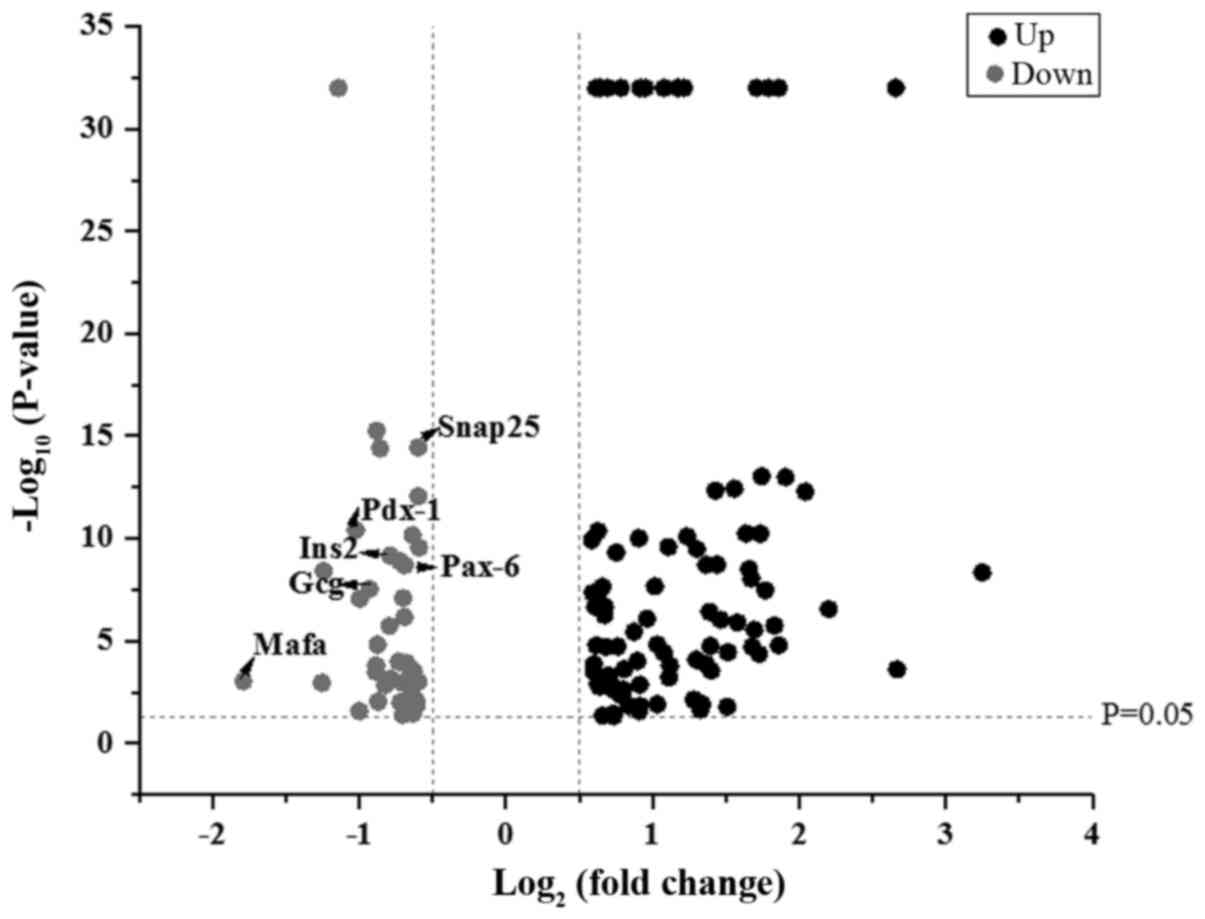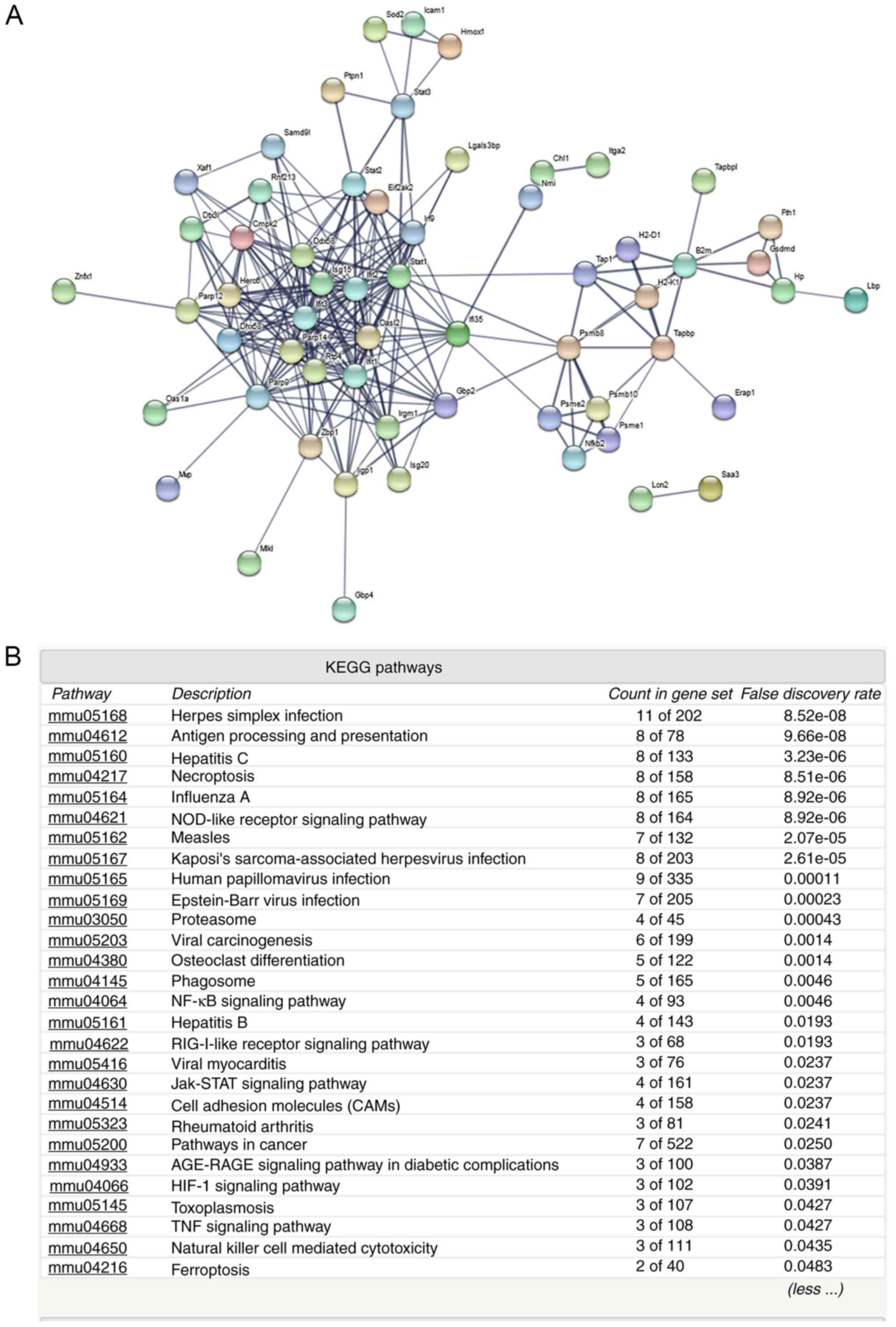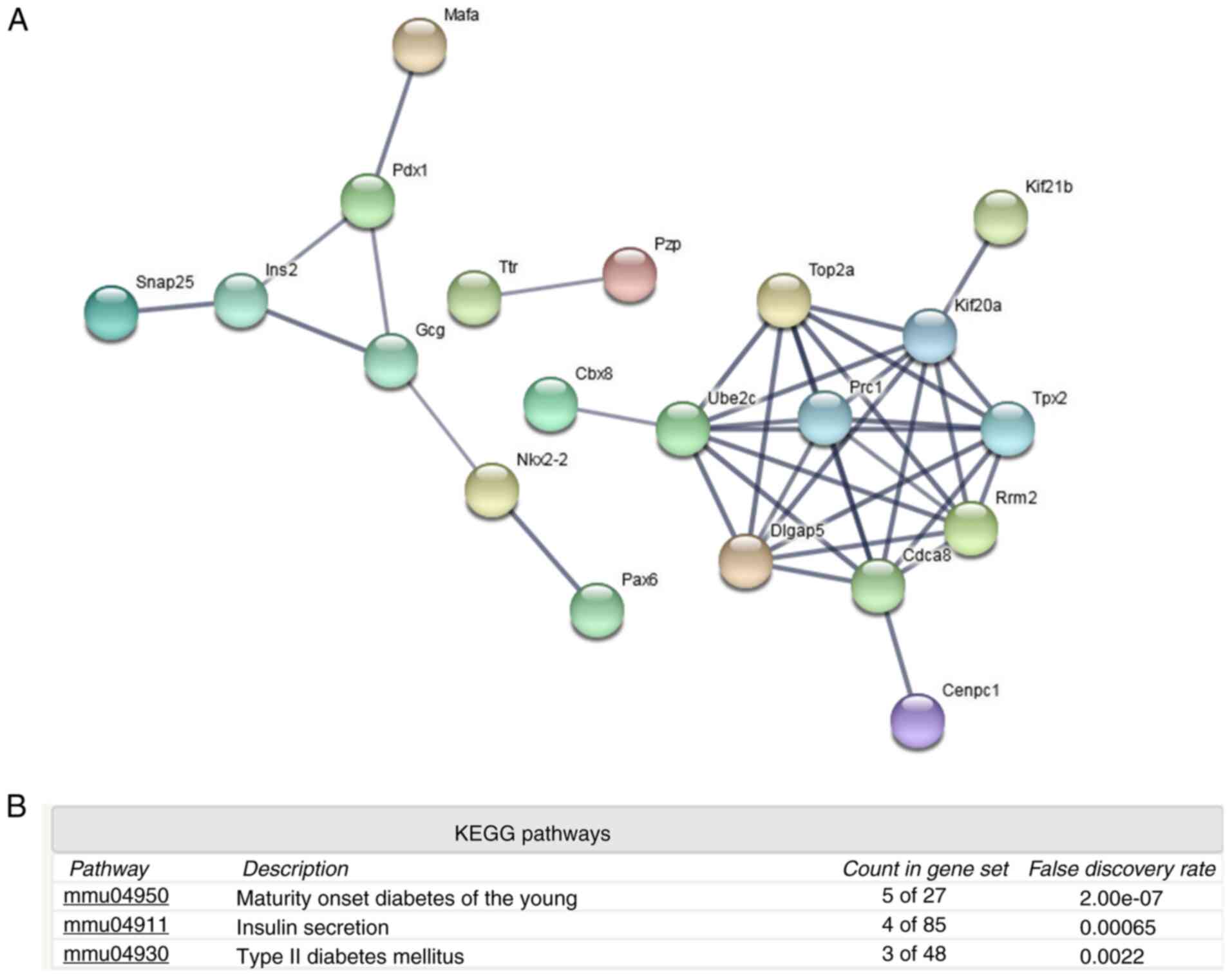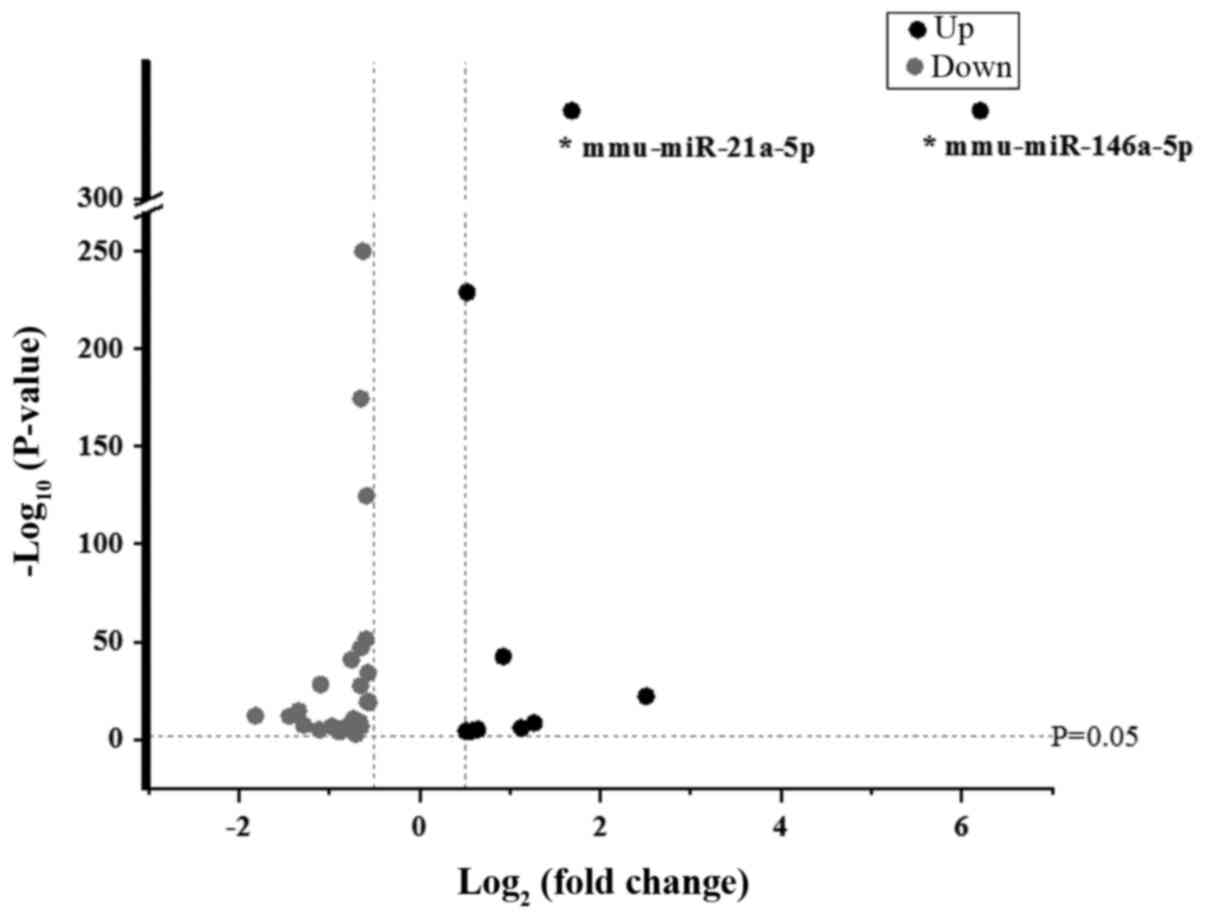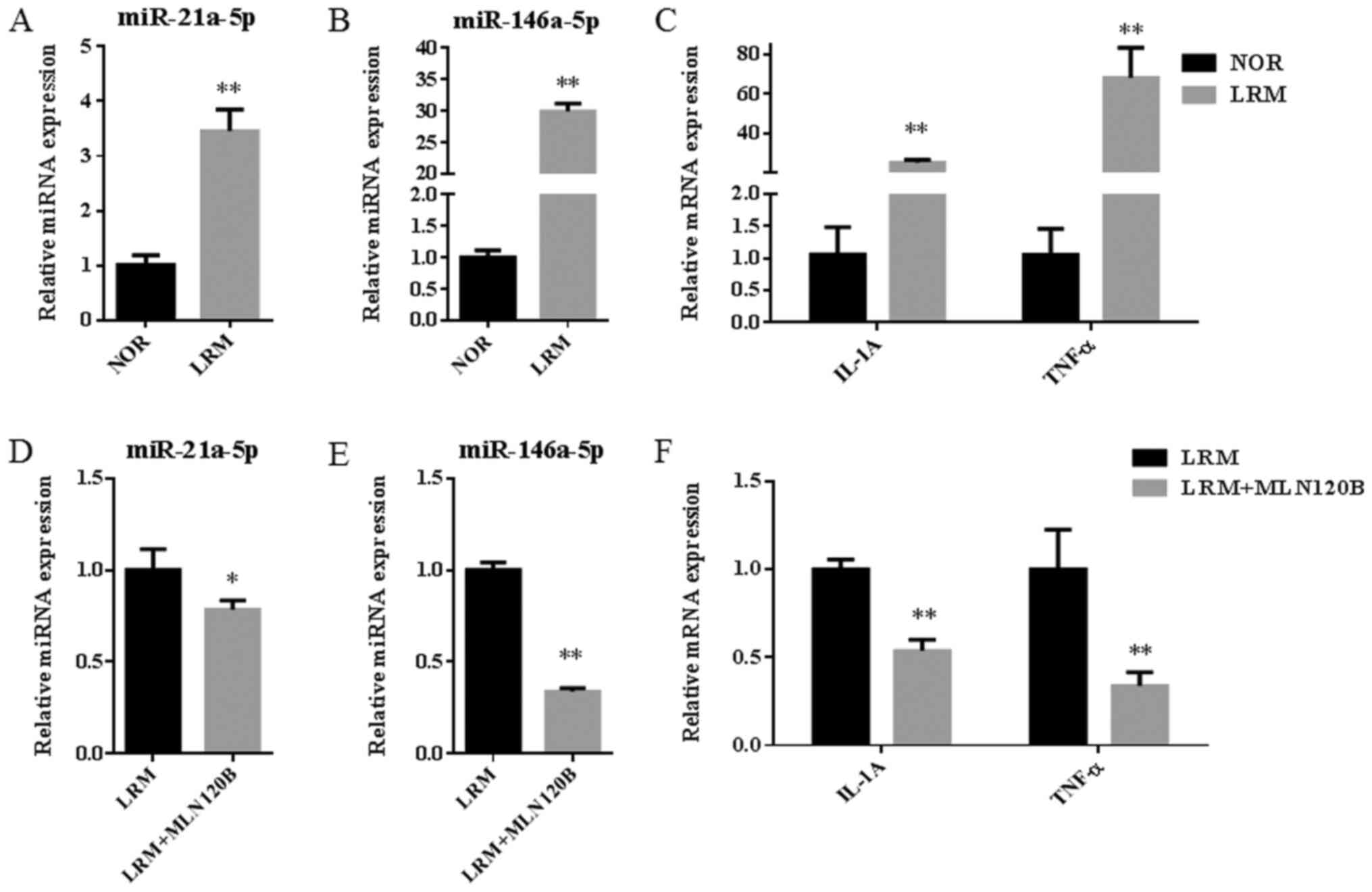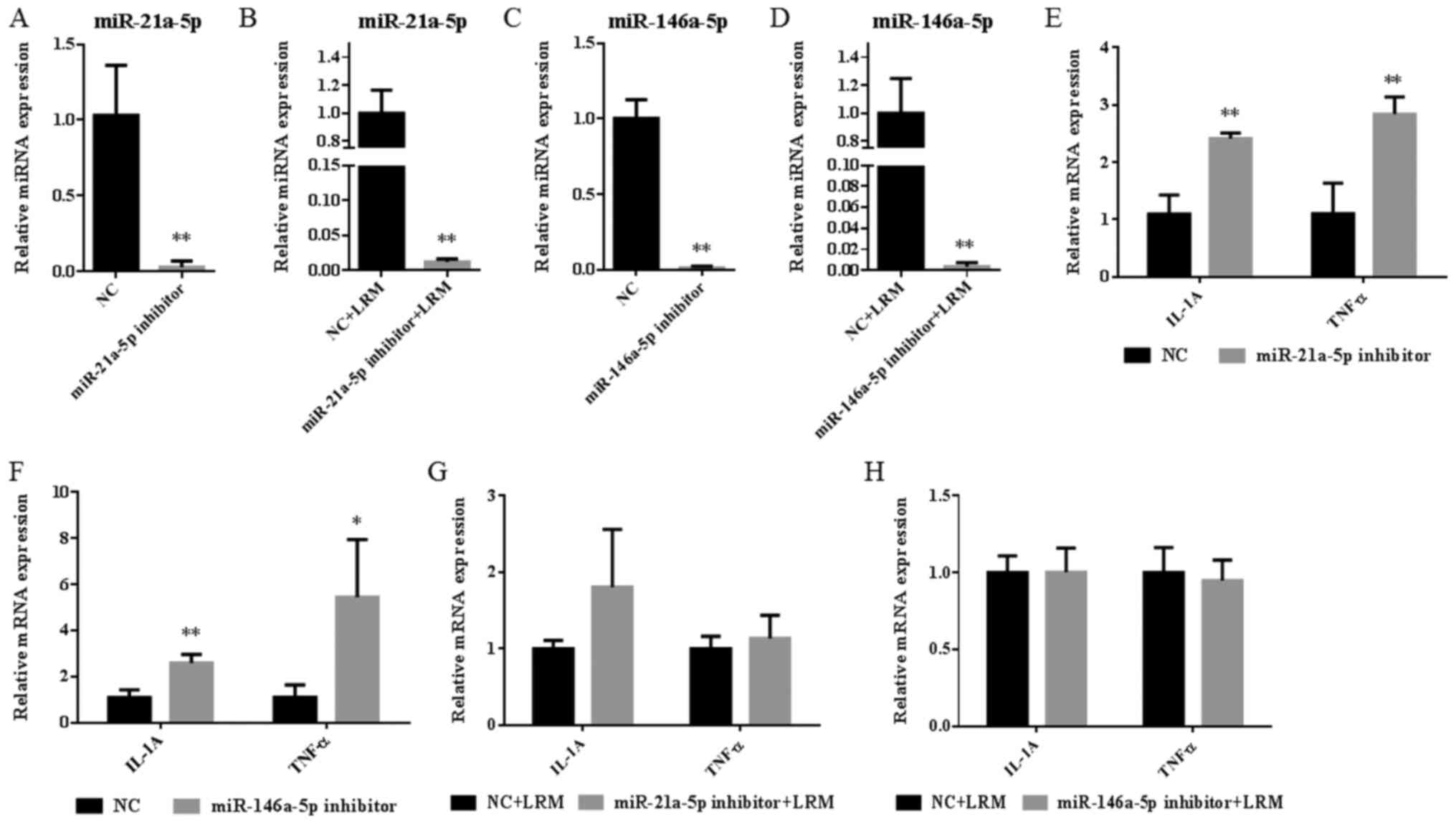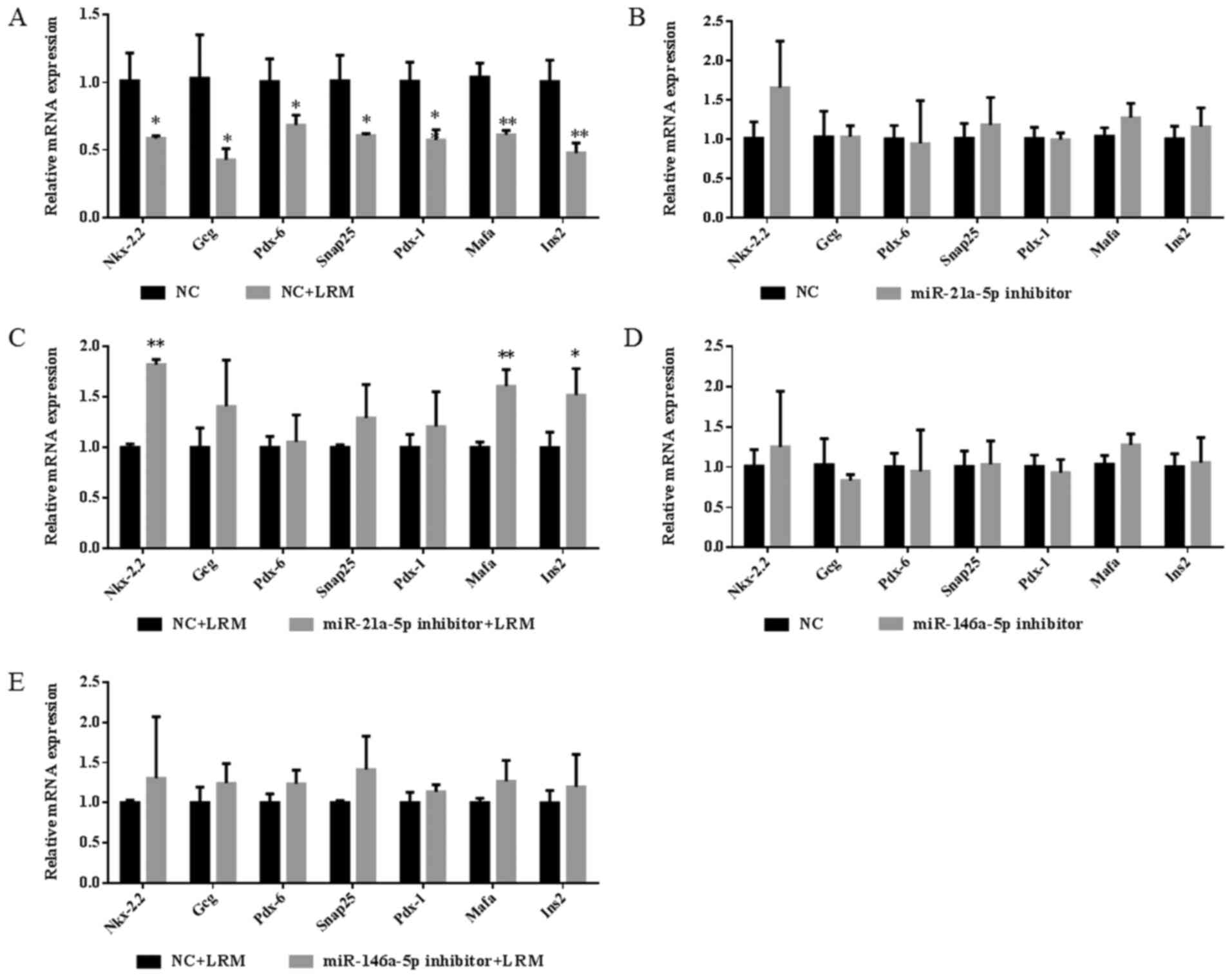|
1
|
Wang L, Gao P, Zhang M, Huang Z, Zhang D,
Deng Q, Li Y, Zhao Z, Qin X, Jin D, et al: Prevalence and ethnic
pattern of diabetes and prediabetes in China in 2013. Jama.
317:2515–2523. 2017.PubMed/NCBI View Article : Google Scholar
|
|
2
|
Lung CW, Wu FL, Liao F, Pu F, Fan Y and
Jan YK: Emerging technologies for the prevention and management of
diabetic foot ulcers. J Tissue Viability. 29:61–68. 2020.PubMed/NCBI View Article : Google Scholar
|
|
3
|
Xie W and Du L: Diabetes is an
inflammatory disease: Evidence from traditional Chinese medicines.
Diabetes Obes Metab. 13:289–301. 2011.PubMed/NCBI View Article : Google Scholar
|
|
4
|
Collier JJ, Sparer TE, Karlstad MD and
Burke SJ: Pancreatic islet inflammation: An emerging role for
chemokines. J Mol Endocrinol. 59:R33–R46. 2017.PubMed/NCBI View Article : Google Scholar
|
|
5
|
Morgan NG, Leete P, Foulis AK and
Richardson SJ: Islet inflammation in human type 1 diabetes
mellitus. IUBMB Life. 66:723–734. 2014.PubMed/NCBI View
Article : Google Scholar
|
|
6
|
Mathis D, Vence L and Benoist C: Beta-Cell
death during progression to diabetes. Nature. 414:792–798.
2001.PubMed/NCBI View
Article : Google Scholar
|
|
7
|
Lee RC, Feinbaum RL and Ambros V: The
C. Elegans heterochronic gene lin-4 encodes small RNAs with
antisense complementarity to lin-14. Cell. 75:843–854.
1993.PubMed/NCBI View Article : Google Scholar
|
|
8
|
Zhao C, Zhang Y and Popel AS: Mechanistic
computational models of MicroRNA-mediated signaling networks in
human diseases. Int J Mol Sci. 20(421)2019.PubMed/NCBI View Article : Google Scholar
|
|
9
|
Ventriglia G, Nigi L, Sebastiani G and
Dotta F: MicroRNAs: Novel players in the dialogue between
pancreatic islets and immune system in autoimmune diabetes. Biomed
Res Int. 2015(749734)2015.PubMed/NCBI View Article : Google Scholar
|
|
10
|
Jiang X, Xu C, Lei F, Liao M, Wang W, Xu
N, Zhang Y and Xie W: MiR-30a targets IL-1α and regulates islet
functions as an inflammation buffer and response factor. Sci Rep.
7(5270)2017.PubMed/NCBI View Article : Google Scholar
|
|
11
|
Wang ZK, Wang J, Liu J, Ying SH, Peng XJ
and Feng MG: Proteomic and phosphoproteomic insights into a
signaling hub role for Cdc14 in asexual development and multiple
stress responses in beauveria bassiana. PLoS One.
11(e0153007)2016.PubMed/NCBI View Article : Google Scholar
|
|
12
|
Tyanova S, Temu T and Cox J: The maxQuant
computational platform for mass spectrometry-based shotgun
proteomics. Nat Protoc. 11:2301–2319. 2016.PubMed/NCBI View Article : Google Scholar
|
|
13
|
Zhang H, Liu T, Zhang Z, Payne SH, Zhang
B, McDermott JE, Zhou JY, Petyuk VA, Chen L, Ray D, et al:
Integrated proteogenomic characterization of human high-grade
serous ovarian cancer. Cell. 166:755–765. 2016.PubMed/NCBI View Article : Google Scholar
|
|
14
|
Ross PL, Huang YN, Marchese JN, Williamson
B, Parker K, Hattan S, Khainovski N, Pillai S, Dey S, Daniels S, et
al: Multiplexed protein quantitation in saccharomyces
cerevisiae using amine-reactive isobaric tagging reagents. Mol
Cell Proteomics. 3:1154–1169. 2004.PubMed/NCBI View Article : Google Scholar
|
|
15
|
Ouyang X, Jiang X, Gu D, Zhang Y, Kong SK,
Jiang C and Xie W: Dysregulated serum MiRNA profile and promising
biomarkers in dengue-infected patients. Int J Med Sci. 13:195–205.
2016.PubMed/NCBI View Article : Google Scholar
|
|
16
|
Guan J, Long K, Ma J, Zhang J, He D, Jin
L, Tang Q, Jiang A, Wang X, Hu Y, et al: Comparative analysis of
the microRNA transcriptome between yak and cattle provides insight
into high-altitude adaptation. PeerJ. 5(e3959)2017.PubMed/NCBI View Article : Google Scholar
|
|
17
|
Langmead B, Trapnell C, Pop M and Salzberg
SL: Ultrafast and memory-efficient alignment of short DNA sequences
to the human genome. Genome Biol. 10(R25)2009.PubMed/NCBI View Article : Google Scholar
|
|
18
|
Friedlander MR, Mackowiak SD, Li N, Chen W
and Rajewsky N: MiRDeep2 accurately identifies known and hundreds
of novel microRNA genes in seven animal clades. Nucleic Acids Res.
40:37–52. 2012.PubMed/NCBI View Article : Google Scholar
|
|
19
|
Zhou L, Chen J, Li Z, Li X, Hu X, Huang Y,
Zhao X, Liang C, Wang Y, Sun L, et al: Integrated profiling of
microRNAs and mRNAs: MicroRNAs located on Xq27.3 associate with
clear cell renal cell carcinoma. PLoS One. 5(e15224)2010.PubMed/NCBI View Article : Google Scholar
|
|
20
|
Wang L, Feng Z, Wang X, Wang X and Zhang X
and Zhang X: DEGseq: An R package for identifying differentially
expressed genes from RNA-seq data. Bioinformatics. 26:136–138.
2010.PubMed/NCBI View Article : Google Scholar
|
|
21
|
Storey JD: The positive false discovery
rate: A Bayesian interpretation and the q-value. Ann Stat.
31:2013–2035. 2003.
|
|
22
|
Hu X, Liu S, Liu X, Zhang J, Liang Y and
Li Y: DPP-4 (CD26) inhibitor sitagliptin exerts anti-inflammatory
effects on rat insulinoma (RINm) cells via suppressing NF-κB
activation. Endocrine. 55:754–763. 2017.PubMed/NCBI View Article : Google Scholar
|
|
23
|
Xie W, Li M, Xu N, Lv Q, Huang N, He J and
Zhang Y: MiR-181a regulates inflammation responses in monocytes and
macrophages. PLoS One. 8(e58639)2013.PubMed/NCBI View Article : Google Scholar
|
|
24
|
Livak KJ and Schmittgen TD: Analysis of
relative gene expression data using real-time quantitative PCR and
the 2(-Delta Delta C(T)) method. Methods. 25:402–408.
2001.PubMed/NCBI View Article : Google Scholar
|
|
25
|
Green AD, Vasu S and Flatt PR: Cellular
models for beta-cell function and diabetes gene therapy. Acta
Physiol (Oxf). 2018(222)2018.PubMed/NCBI View Article : Google Scholar
|
|
26
|
Eguchi K and Manabe I: 2013. Macrophages
and islet inflammation in type 2 diabetes. Diabetes Obes Metab.
15:152–158. 2013.PubMed/NCBI View Article : Google Scholar
|
|
27
|
Zhu Y, Liu Q, Zhou Z and Ikeda Y: PDX1,
neurogenin-3, and MAFA: Critical transcription regulators for beta
cell development and regeneration. Stem Cell Res Ther.
8(240)2017.PubMed/NCBI View Article : Google Scholar
|
|
28
|
Panneerselvam A, Kannan A,
Mariajoseph-Antony LF and Prahalathan C: PAX proteins and their
role in pancreas. Diabetes Res Clin Pract.
155(107792)2019.PubMed/NCBI View Article : Google Scholar
|
|
29
|
Sussel L, Kalamaras J, Hartigan-O'Connor
DJ, Meneses JJ, Pedersen RA, Rubenstein JL and German MS: Mice
lacking the homeodomain transcription factor Nkx2.2 have diabetes
due to arrested differentiation of pancreatic beta cells.
Development. 125:2213–2221. 1998.PubMed/NCBI
|
|
30
|
Cupertino RB, Kappel DB, Bandeira CE,
Schuch JB, da Silva BS, Muller D, Bau CH and Mota NR: SNARE complex
in developmental psychiatry: Neurotransmitter exocytosis and
beyond. J Neural Transm (Vienna). 123:867–883. 2016.PubMed/NCBI View Article : Google Scholar
|
|
31
|
Shin OH: Exocytosis and synaptic vesicle
function. Compr Physiol. 4:149–175. 2014.PubMed/NCBI View Article : Google Scholar
|
|
32
|
Zhuang GQ, Wu W, Liu F, Ma JL, Luo YX,
Xiao ZX, Liu Y, Wang W and He Y: SNAP-25(1-180) enhances insulin
secretion by blocking Kv2.1 channels in rat pancreatic islet
beta-cells. Biochem Biophys Res Commun. 379:812–816.
2009.PubMed/NCBI View Article : Google Scholar
|
|
33
|
van de Bunt M, Gaulton KJ, Parts L, Moran
I, Johnson PR, Lindgren CM, Ferrer J, Gloyn AL and McCarthy MI: The
miRNA profile of human pancreatic islets and beta-cells and
relationship to type 2 diabetes pathogenesis. PLoS One.
8(e55272)2013.PubMed/NCBI View Article : Google Scholar
|
|
34
|
Sheedy FJ: Turning 21: Induction of miR-21
as a key switch in the inflammatory response. Front Immunol.
6(19)2015.PubMed/NCBI View Article : Google Scholar
|
|
35
|
Sims EK, Lakhter AJ, Anderson-Baucum E,
Kono T, Tong X and Evans-Molina C: MicroRNA 21 targets BCL2 mRNA to
increase apoptosis in rat and human beta cells. Diabetologia.
60:1057–1065. 2017.PubMed/NCBI View Article : Google Scholar
|
|
36
|
Wang H, Fan H, Tao J, Shao Q and Ding Q:
MicroRNA-21 silencing prolongs islet allograft survival by
inhibiting Th17 cells. Int Immunopharmacol. 66:274–281.
2019.PubMed/NCBI View Article : Google Scholar
|
|
37
|
Yuan J, Chen H, Ge D, Xu Y, Xu H, Yang Y,
Gu M, Zhou Y, Zhu J, Ge T, et al: Mir-21 promotes cardiac fibrosis
after myocardial infarction via targeting smad7. Cell Physiol
Biochem. 42:2207–2219. 2017.PubMed/NCBI View Article : Google Scholar
|
|
38
|
Nahid MA, Satoh M and Chan EK: Mechanistic
role of microRNA-146a in endotoxin-induced differential
cross-regulation of TLR signaling. J Immunol. 186:1723–1734.
2011.PubMed/NCBI View Article : Google Scholar
|
|
39
|
Xie W, Li Z, Li M, Xu N and Zhang Y:
MiR-181a and inflammation: MiRNA homeostasis response to
inflammatory stimuli in vivo. Biochem Biophys Res Commun.
430:647–652. 2013.PubMed/NCBI View Article : Google Scholar
|
|
40
|
Zhang S, Gu D, Ouyang X and Xie W:
Proinflammatory effects of the hemagglutinin protein of the avian
influenza A (H7N9) virus and microRNAmediated homeostasis response
in THP1 cells. Mol Med Rep. 12:6241–6246. 2015.PubMed/NCBI View Article : Google Scholar
|















